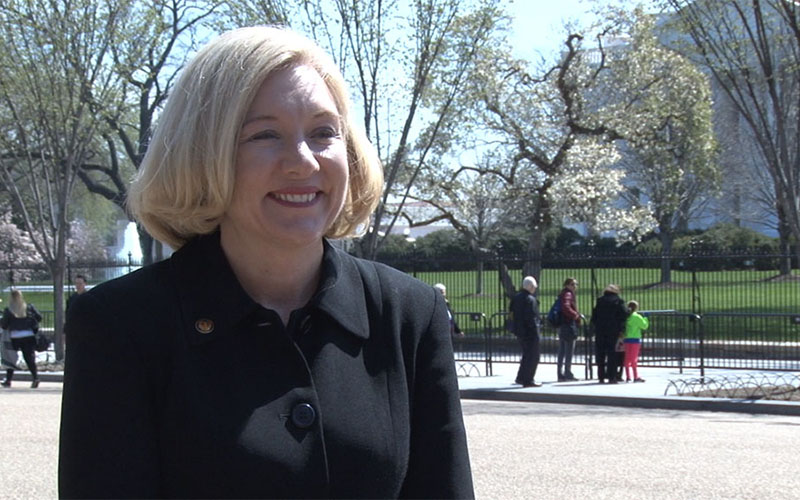WASHINGTON – Phoenix and Tucson water officials took the occasion of the first-ever White House Water Summit to announce plans Tuesday for a more than fivefold increase in the joint conservation effort between the two cities.
The announcement will mean 1.6 million gallons of Phoenix water will be stored annually in Tucson – a theme of collaborative effort that ran through Tuesday’s meeting that drew water officials from around the country – including a number from Arizona.
Conservation conversation
Seven Arizona conservation initiatives announced at the White House Water Summit:
“I think sometimes it’s easy to compartmentalize this as a Southwestern issue, but it really is an issue that’s impacting the entire country,” said Heather Macre, a Maricopa County representative in the Central Arizona Water Conservation District, who was also at the event.
She said the summit, timed to coincide with U.N. World Water Day, was a “place where we can all get together, talk about the issues we’re facing, and see if there’s innovative solutions that we can share, not just across the aisle, but also across the country.”
Her organization is one of a group of Colorado River Basin agencies that announced an expansion of its own conservation project Tuesday. The group launched the second phase of a project that compensates water users who take part in voluntary conservation projects, and connects farmers, ranchers and tribes with municipalities and policymakers to encourage conversations on water solutions.
She said collaboration among regional organizations “is going to be the solution as opposed to doing it on a state or agency basis.”
That was echoed by officials from Tucson and Phoenix, who launched a program in 2014 that began storing 800 acre-feet of Phoenix’s excess water in Tucson’s available storage space.
Timothy Thomure, director of Tucson Water, said the program’s long-term goal is to increase the storage capacity to 40,000 acre-feet per year, or one-third of Phoenix’s total water allotment.
Because Tucson relies on wells and Phoenix relies on surface water, the cities have been able to leverage their respective infrastructure and “gain tremendous efficiency and really create resiliency for both communities,” said Kathryn Sorensen, director of Phoenix Water Services.
Thomure said the cooperative idea seems to be spreading.
“We are talking with other communities in the Phoenix Valley about whether they’d be interested in participating in something similar, and we’re starting to get some interest based on the success we’ve had working with Phoenix,” he said.
The Colorado River Basin has gone through more than a decade of drought, but Macre said she was happy to see the federal government bring awareness to an issue that affects the entire nation, not just the desert states.
The Obama administration announced its own water initiatives Tuesday as part of the summit. Those included $35 million in federal grants to support research, a new National Water Model that will increase river-forecasting capabilities from 4,000 locations to 2.7 million and the release of a presidential memorandum and action plan for drought resilience.
The White House also announced $4 billion in private capital that it said will be invested in water-infrastructure projects and another $1 billion for research and development.
The summit drew roughly 200 participants who featured projects, including several from Arizona State University, the University of Arizona, the Central Arizona Project and other organizations from the state, according to a White House fact sheet.
– Cronkite News video by Samantha Witherwax


